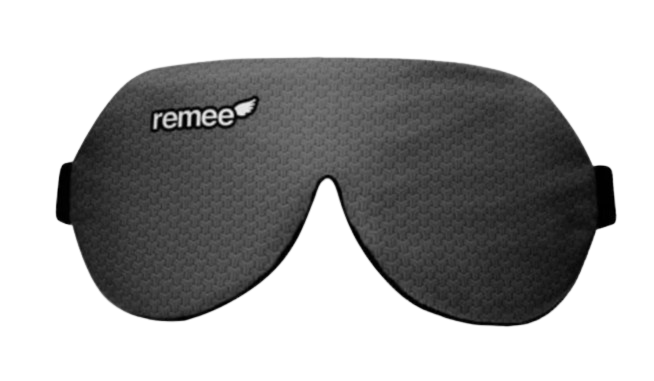The realm of dreams has long fascinated humanity, offering a mysterious landscape where the boundaries of reality blur and the subconscious takes the reins. Among the myriad phenomena within this domain, two experiences stand out for their unique and sometimes perplexing nature: lucid dreaming and sleep paralysis. While seemingly disparate, these occurrences share a complex relationship that has intrigued scientists, psychologists, and spiritualists alike. In this exploration, we delve into the enigmatic connection between lucid dreaming and sleep paralysis, unraveling their mechanisms, experiences, and potential implications.
Is There a Connection Between Lucid Dreaming and Sleep Paralysis?
Understanding Lucid Dreaming
Before delving into their connection, it's essential to grasp the fundamentals of lucid dreaming. Unlike typical dreams where one passively experiences the narrative, lucid dreaming involves a state of awareness within the dream. In other words, the dreamer becomes cognizant of the dream environment, often gaining control over their actions, surroundings, and even the dream's storyline.
Lucid dreaming opens a gateway to boundless creativity, self-exploration, and even therapeutic potential. Advocates suggest that practicing lucid dreaming can enhance problem-solving skills, alleviate nightmares, and facilitate personal growth by tapping into the subconscious mind's vast reservoirs.
Unraveling Sleep Paralysis
In stark contrast to the freedom of lucid dreaming, sleep paralysis presents a terrifying and immobilizing experience. During sleep paralysis, one finds themselves conscious yet unable to move or speak, often accompanied by vivid hallucinations and a sense of impending dread. This phenomenon typically occurs during the transitional phases of sleep, when the body remains in a state of muscle atonia to prevent acting out dreams.
While the science behind sleep paralysis is well-documented, its psychological and cultural interpretations vary. Across different cultures, sleep paralysis is often attributed to supernatural entities like demons or spirits, leading to diverse folklore and mythologies surrounding the phenomenon.
The Intriguing Intersection
Despite their seemingly disparate nature, lucid dreaming and sleep paralysis intersect in intriguing ways, leading some to speculate on shared underlying mechanisms. One notable connection lies in the hypnagogic and hypnopompic states—the transitional phases between wakefulness and sleep—where both phenomena frequently occur.
Research suggests that individuals prone to lucid dreaming may also experience heightened occurrences of sleep paralysis. This correlation has led scientists to explore common neural pathways and neurotransmitter systems that may underpin both phenomena. Additionally, some studies propose that the ability to induce lucid dreaming could serve as a potential intervention for managing sleep paralysis-related distress.
Psychological Perspectives
From a psychological standpoint, the connection between lucid dreaming and sleep paralysis offers insights into the complexities of the human mind. Both phenomena provide fertile ground for examining consciousness, self-awareness, and the interplay between cognition and perception.
For instance, some researchers propose that lucid dreaming may serve as a protective mechanism against the distressing aspects of sleep paralysis. By fostering a sense of agency and control within the dream state, individuals may mitigate the fear and helplessness often associated with sleep paralysis episodes.
Furthermore, exploring the relationship between lucid dreaming and sleep paralysis sheds light on the intricate dynamics between the conscious and unconscious mind. These experiences challenge conventional notions of reality and illuminate the depths of human consciousness, prompting profound philosophical inquiries into the nature of existence and perception.
Practical Applications and Therapeutic Potential
Beyond theoretical speculation, the connection between lucid dreaming and sleep paralysis holds practical implications for various fields, including psychology, neuroscience, and mental health. Harnessing the therapeutic potential of lucid dreaming techniques may offer novel approaches for managing sleep disorders, including sleep paralysis.
For instance, cognitive-behavioral interventions that incorporate lucid dreaming induction techniques have shown promise in reducing the frequency and severity of sleep paralysis episodes. By empowering individuals to navigate and manipulate their dream environments, these interventions aim to instill a sense of mastery and resilience in the face of sleep-related disturbances.
Moreover, the exploration of lucid dreaming as a tool for confronting and resolving traumatic experiences holds significant therapeutic value. By engaging with the subconscious realm in a controlled and empowered manner, individuals may unlock pathways to healing, self-discovery, and emotional integration.
Conclusion
In the intricate tapestry of human consciousness, lucid dreaming and sleep paralysis emerge as two distinct yet interconnected threads, weaving together the fabric of our nocturnal experiences. While each phenomenon offers its own set of mysteries and revelations, their convergence unveils a deeper understanding of the mind's labyrinthine depths.
As we continue to unravel the enigmatic connection between lucid dreaming and sleep paralysis, we embark on a journey of discovery—a journey that transcends the boundaries of waking reality and delves into the realms of the subconscious. In embracing the complexity of these phenomena, we unlock doors to new insights, therapeutic modalities, and perhaps, a deeper appreciation for the profound mysteries that inhabit the realm of dreams.
Featured image by Annies Spratt on Unsplash.com
The Remee Lucid Dream Mask
$75.00 $29.99 (Offer available until stock lasts)
We created the Lucid Dreaming Mask to make lucid dreaming as easy and straight-forward as possible, so that everyone could have their opportunity to explore the beautiful world of their dreams. Our mask is designed to help you realize you're asleep by displaying soft LED light signals after you go to sleep. These signals will show up in your field of view, even in a dream; helping to unlock the world of lucidity, where everything is possible!
Learn More

